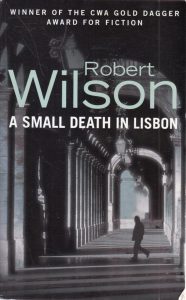
Lisbon is a great place to get lost. After all, the city’s very own Santo António is the patron saint of lost things and missing persons.
How about planning a ‘lost weekend’ in Lisbon? It’s one of Europe’s best deals for eating out, drinking vinho verde and for enjoying yourself to the hilt.
Like any of the world’s top cities, Lisbon is best explored on foot. The steep hills that run up from the Tagus river will get your heart beating properly.
Start off by wandering the maze of medieval alleyways, cobbled streets, stairways and the picturesque squares in Alfama, the oldest district in the Portuguese capital. Alfama was originally built by the occupying Moors more than 1000 years ago. Pass the colourful shuttered houses as you climb up to the top of the highest hill in the city, all the way up to the battlements of the old Moorish castle, the Castello São Jorge. Here you can walk along the ramparts and climb 18 towers while admiring the city’s best views.
Alfama was the one part of Lisbon to escape the earthquake that devastated most of the city in 1755. Mansions of the rich and mighty in other districts crumbled and fell, but in Alfama – home to poor fishermen and workers – the buildings and the people survived.
Fado
Today Alfama is a village in the city, still populated by people of modest incomes. It’s a treasure trove for photographers and aficionados of architecture. You can hear the barking of dogs mixed with the sound of fado (Portuguese folk song) coming from the tavernas and traditional fado houses. Immigrants play African music at clubs and bars. If your feet need a rest from the cobblestones, you can hop on one of the old trams (some of them were imported from San Francisco). Stop for a strong black coffee or a glass of the local vinho verde (‘green wine’) on the way back down the hill.
Baixa and Chiado
The Pombaline Lower Town, or Baixa Pombalina, is right next to Alfama. The Baixa’s streets are named after tradesmen: cobblers, goldsmiths, blacksmiths, herbalists and others. After the earthquake Marquês de Pombal rebuilt the area on a grid system with broad streets and impressive neoclassical buildings. They lead the way to the Praca do Comercio, a square on the banks of the Tagus. The Baixa is Lisbon’s commercial centre, featuring narrow streets, tiled facades and wrought-iron balconies. The neighbouring Chiado disctrict is packed with designer shops, bookstores, cafés and several museums and theatres. This area was restored after a sweeping fire devastated the neighbourhood in 1988. The café A Brasileira is famous in Portugal, especially since the renowned poet Fernando Pessoa used to be a regular. The choice of food in the restaurants of Lisbon is immense – with delicious seafood being the main fare. You can’t leave Lisbon without trying the local Bacalhau, salt cod with potatoes and onion.
Igreja de Santo Antónior
If you eventually get too lost in the labyrinth neighbourhoods of Lisbon, you might come to find yourself at the church Igreja de Santa António. Saint Anthony of Padua, a Franciscan monk who became the patron saint of Portugal, was born in a house here in 1195. The house was later destroyed in the earthquake. In the crypt, a guide will show you the exact spot where António, patron saint of lost things, was born. According to local legend, this knowledge has not been lost.
BOOKS set in LISBON
A Small Death in Lisbon is an award-winning crime novel by Robert Wilson with two narratives, one a contemporary murder investigation and the other from German-occupied Portugal in World War II.
The Night in Lisbon by Erich Maria Remarque is about wartime Lisbon and the plight of the refugees there.



















